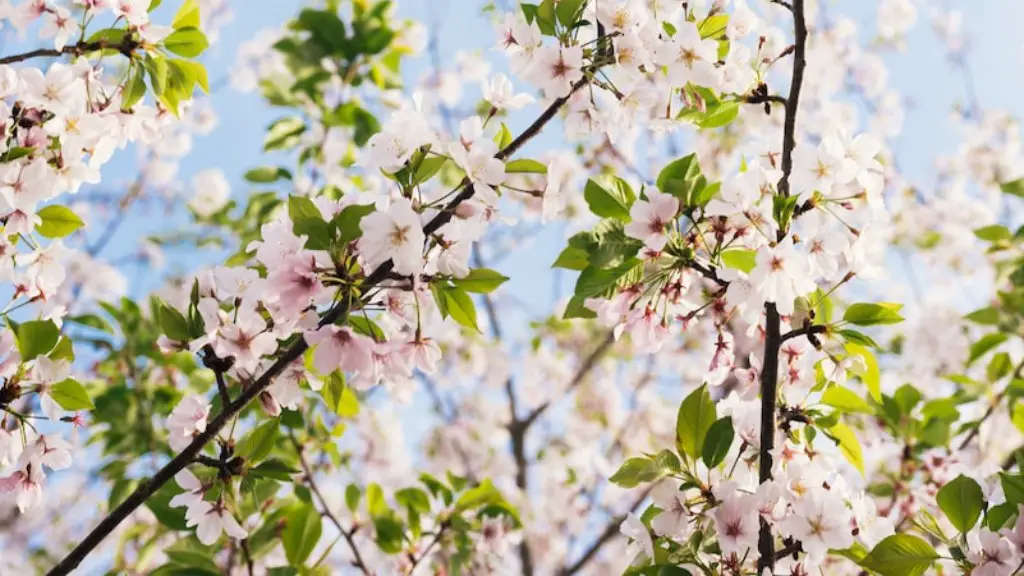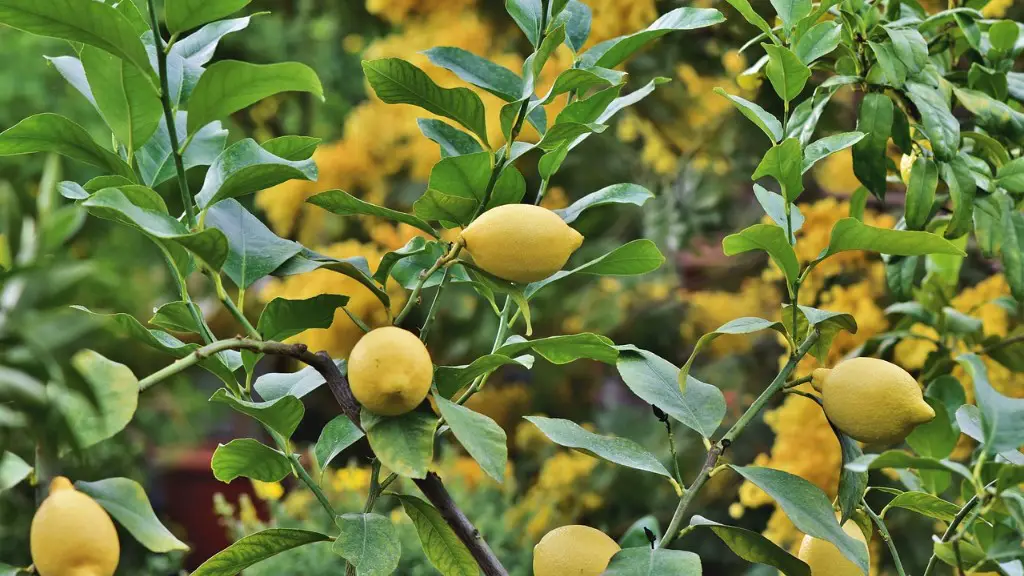Preparing the Tree
Growing a cherry tree is not difficult, but certain steps must be taken in order to experience the beauty of its blooms. The first step is to select the species of tree and find the best place in the landscape for it – preferably in full sun, in soil that is well drained, and with adequate room for growth. Pruning is an important part of preparing a cherry tree for blooming and must be done two to three times annually, before spring begins and during the summer until fall. Pruning should be done on young trees for the first two to three years, with the goal of keeping their height to between 10-15 feet. Live and dead branches should both be removed throughout the pruning, and the tree should be given a semi-circular shape to ensure blooms are maximized. Once pruning is complete, the tree should be watered thoroughly.
Fertilizing the Tree
Fertilizing the cherry tree is necessary to ensure the blooms are not only abundantly found, but long-lasting. A good all-purpose fertilizer should be used and, depending on the tree’s age, applied once or twice every year. Fertilizers containing nitrogen, phosphorus and potassium are the best options, and should be used at the recommended dosages. Applying fertilizer too close to the trunk can cause adverse reactions in the tree, so the drip-line of the tree is the furthest it should be placed. Once the fertilizer is applied, the tree should be watered thoroughly and deep root fertilizing may also be beneficial.
Mulching
A layer of organic mulch should be spread around the cherry tree, three to four inches thick, after it is fertilized. Mulching can help retain moisture and keep weeds at bay, while providing essential nutrients to the tree. It will also protect the roots by regulating temperature fluctuations. A fresh layer of mulch should be applied annually, and it should not be allowed to touch the trunk of the tree.
Protecting from Insects
Cherry trees are prone to insect attacks, which can cause the buds to drop before it blooms and reduces the amount of fruit produced. Insects such as aphids, scale and mites are the biggest threat to the tree and should be prevented from infesting by regularly spraying with an insecticide or neem oil. Regular inspections of the tree should also be carried out, with any noticeable pests removed by hand.
Picking the Proper Time
When the time to bloom finally arrives, the cherry tree should be monitored and pruned appropriately. If too much pruning is done, the tree will not have enough energy to support the blooms. Blooms can start to appear in late winter or early spring, and they should be pruned only if they appear weak or damaged. The tree should also be inspected regularly to ensure that it is not affected by disease or fungus.
Providing the Right Conditions
Cherry blossoms require specific conditions to thrive, so providing the right amount of sunlight, water and fertilizer is paramount for achieving the desired results. Adequate moisture should be provided through weekly or bi-weekly waterings, and pests should be removed or prevented from entering the garden. Spring temperatures should also be monitored, as blooms are sensitive to sudden temperature changes.
Caring for the Tree
Caring for a cherry tree is essential for the blooming process and can be done without the use of chemicals or fertilizers. Through regular trimming, mulching and monitoring of the tree, the cherry tree should reach its fullest potential. Once the tree is in bloom, it should be further cared for to ensure its health and longevity.
Pest Prevention
Pests are a major problem when it comes to cherry tree blooming, so preventive measures must be taken. Regular inspections, prompt removal of visible pests and the use of neem oil or pesticides can help ensure healthy, consistent blooms. Other preventive methods include monitoring the temperature and keeping the tree away from wet or moist areas.
Fungal Prevention
Fungal diseases can cause serious damage to the root system and buds of a cherry tree, therefore regular monitoring is necessary. Fungicides, good soil drainage and proper pruning techniques should be used to prevent fungal growth. Mulching around the tree can also help prevent fungal growth, as it helps to keep the soil temperature low and maintain a healthy root system.
Meeting the Tree’s Needs
Cherry trees require the right mix of elements to reach their full bloom potential, and this includes providing adequate sunlight, water and fertilizer. Monitoring the tree year-round and pruning appropriately should also be done to ensure it has the energy required once bud-breaking begins. Regular mulching and preventive measures against pests and fungus are also key.


